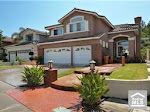Are the finances of Orange County homebuying out of whack?
At least by one measure, a home purchase’s financial hit to a typical household budget is nearing the insanity of the housing bubble of a decade ago. And these recent costs are even on par with the late 1980s housing boom, when inflation is factored into the equation.
A strong job market and a shortage of homes to buy has created rising home prices. Toss in higher interest rates and you get one estimate of recent homebuyers’ monthly payments at a nine-year high. CoreLogic says a typical buyer in March who financed their Orange County purchase would be paying $3,228 a month on the mortgage. CoreLogic arrives at the estimate by studying public details on each purchase mortgage made.
That’s a jump of $266 a month or 9 percent in a year. And it’s up $1,280 a month, or 66 percent, since the cyclical bottom in December 2011. (Yes, that was the time to buy!)
This recent jump in house pricing — and CoreLogic’s math includes newly built and existing single-family homes, townhomes and condos — is certainly a jolt to any house hunter’s budget. But it’s not unfamiliar territory for the Orange County market.
CoreLogic stats show between June 2004 and February 2008 this measure of homebuyer payments ran above March 2017’s level. But that era’s housing market — clearly overheated by easy lending terms — soon collapsed into the Great Recession.
Then factor inflation into the math. That makes housing costs in the middle of last decade look even sillier: One-third higher at that insanity’s peak vs. the latest costs. Ouch!
Curiously, when you look at inflation-adjusted mortgage payments back even further, you learn that 1989’s inflation-adjusted house payment for a buyer basically equaled today’s costs.
In those days, a booming local economy had a few dark clouds on the horizon. Unemployment had dipped below 4 percent, much like it has done lately. Plus, another similarity to 2017: a burgeoning local slow-growth movement threatened a needed supply of new residences.
Yes, the Orange County price tags looked leaner. The median selling price for all residences in 1989 peaked at $218,000. For March 2017, it was $665,000. Yet local paychecks were being stretched three decades ago, too. Orange County’s median household incomes ran around $40,000 as the 1980s ended. Today, it’s pushing $90,000.
Yes, home prices have essentially tripled. Incomes grew, but not as much. But I didn’t instantly recall this tidbit: the typical rate on a 30-year fixed mortgage 28 years ago was slightly above 10 percent. That is T-E-N percent. And some folks complain we’re now above 4 percent.
Three decades of inflation also has roughly doubled the costs of everyday goods. To jog your memories: In 1989, postage stamps were a quarter; gasoline ran about a buck a gallon, and a movie ticket would often cost you $4. Another “bargain” of that day: After the second stock market crash in two years, the Dow Jones Industrial Index fell to just above 2,000 in late 1989. It’s above 20,000 this month.
So, an Orange County buyer’s typical house payment in June 1989 was $1,679 — roughly half of 2017. But converted into today’s dollars to account for inflation, that payment translates to $121 more a month than the average payment this March.
Additionally, many late 1980s buyers took on added risks with the popular mortgages of the day. To save money, adjustable-rate loans were almost half of 1989’s financed purchases In March 2017, just 1-in-6 buyers used adjustable financing.
History reminds us that the late 1980s real estate upswing ended poorly, too. Aggressive lending by failing savings and loans led to overbuilding. U.S. defense-spending cutbacks, spurred by Soviet Russia’s demise, hit Southern California hard, eliminating numerous good-salaried jobs. Homebuying shrank as prices went limp, taking most of the 1990s to regain any serious momentum.
Orange County housing has been expensive for a really long time, and the affordability headaches created often lead to much suffering inside and outside of the ownership game.
Even in an advancing economy, housing’s no sure bet. So … is today’s market a just little out of balance or amid a mania that is overpricing deals and priming the market for another tumble?








































































































